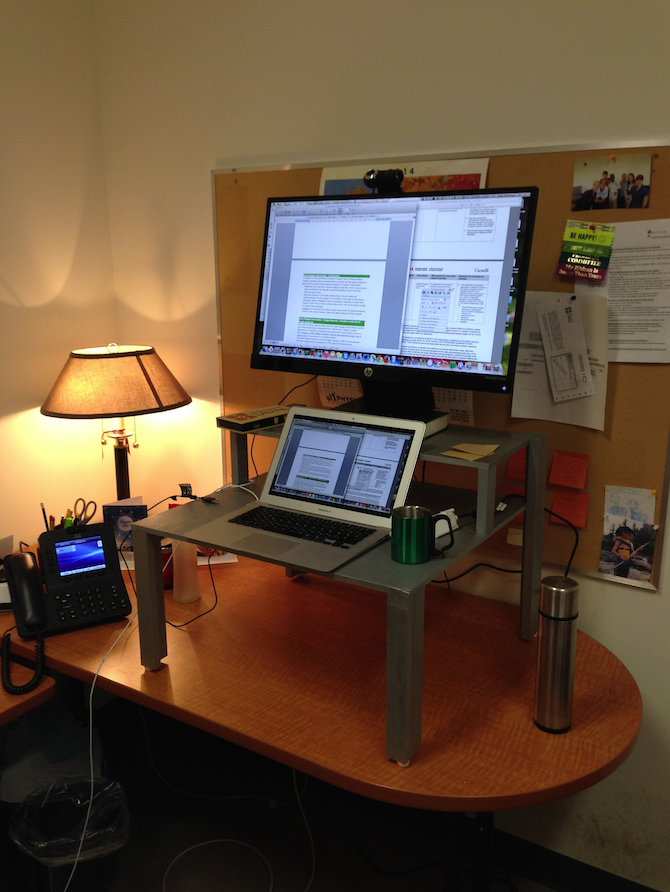“Sitting is the new smoking,” they say. Since I already have type 1 diabetes, I don’t need extra health risk factors.
My PhD is in Human Factors, a field that include ergonomics, so I have been familiar with the idea of standing desks for a while. About 10 years ago, I decided to try a standing desk for a while to see how I liked it. As a grad student, I didn’t have extra money to buy a fancy desk, so I used an Ikea hack: I had an Ivar shelf so I put my monitor on a shelf at standing height and added a keyboard shelf beneath — an option that was available back when people used keyboards.
I can’t know exactly what, if any, health impact this had for me. For whatever it is worth, in my n of 1 experiment, despite having type 1 diabetes for 32 years, I have no end organ damage. How much this one habit played into my fortunate state of doing-ok-so-far, I do not know.
What I can say is that I am more productive working at a standing desk. I think more clearly and write faster. I am lucky to have an office with a door that closes, which means that the standing desk also makes for more frequent dance breaks. I close my door, put on headphones, and use movement to help me think my way through a tricky analysis or design question. (Those who are better dancers than I am may not require the closed door.)
Back when my kids were younger, a standing desk at home also helped me solve the tension of academic parenthood. When I was home with a sick baby or toddler, had no child care, needed to write on mat leave, or (too often) found that I had put too much on my plate and needed to do more evening or weekend work to catch up, I could put a child in a carrier on my back and work while I swayed them to sleep. (I also had a tall stool and breastfeeding pillow so that I could sit and nurse them while typing. While cognitive multitasking may not truly exist, this kind of multitasking does.)
I wanted to put this post out there because I see more and more articles about how we shouldn’t be sitting to work. I think the message of these articles is good, but many of them link to expensive standing desks, which not everyone can afford.
If you want a standing desk but don’t have hundreds or thousands of dollars to spend, you may have other options. Unless your height changes a great deal from day to day, you can use anything that will raise the screen and keyboard to the right height. I did not bother trying to put a fancy desk through purchasing at work, I just brought the DIY (do it yourself) stand pictured above from home. It is made of plywood and scrap wood painted a silvery-grey to match with the colour scheme in our offices. It has rubber feet so as to not damage the desk. When I switched from one large screen to another, the screen height was no longer quite right so I put a book under the new screen.
Not everyone can adapt their own working space, unfortunately. However, for those who do have some flexibility, you don’t have to come up with hundreds or thousands of dollars for a whole new desk. If you want to stand to work, consider just putting something under your current setup to raise it to the right height for you. Like my work desk, I have a similar setup at home. My husband uses a metal shelving unit in his office. If you can’t make something like this, you might try a sturdy box at least for a while to see how you like standing to work.
I recommend dance breaks.


